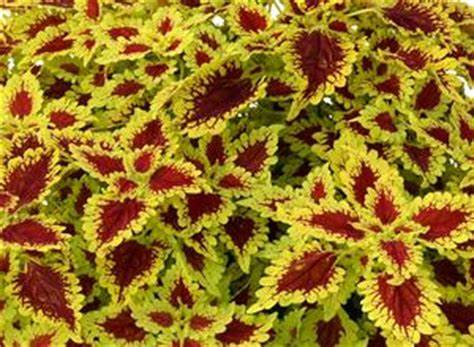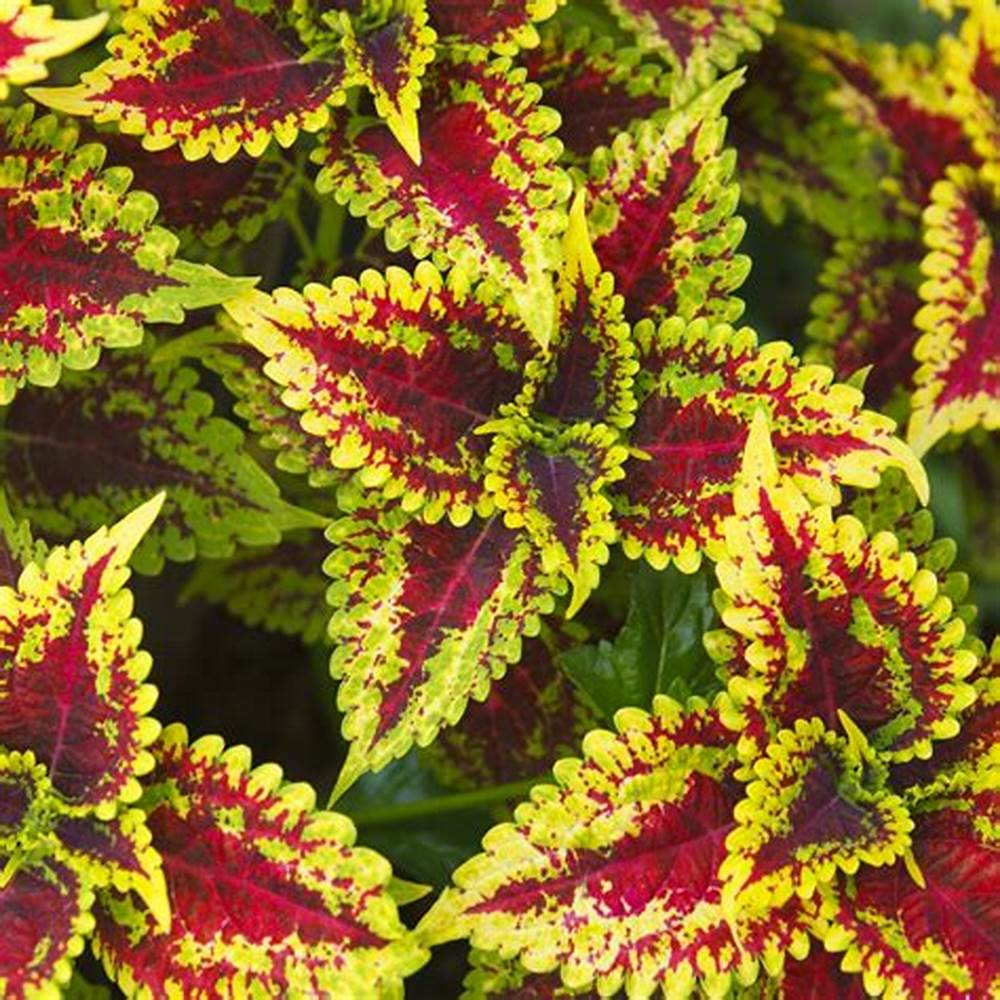

Unveiling the Enigmatic Beauty of the
Green Paradise Coleus Plant
About Coleus Plant
In the realm of botanical wonders, where leaves transform into living canvases of art, the Coleus plant reigns supreme. With its vibrant hues and intricate patterns, this plant has captured the hearts of gardening enthusiasts and interior designers alike. But the Coleus is more than just an ornamental delight; it holds a captivating history and boasts a multitude of fascinating characteristics.
A Glimpse into the Past: Origins and Evolution
- The Coleus plant, scientifically known as Coleus scutellarioides, is a member of the Lamiaceae family, which encompasses a wide range of aromatic and flowering plants.
- Originating in tropical regions of Southeast Asia, particularly Indonesia and Malaysia, the Coleus has traveled the world over the centuries, enchanting cultures with its kaleidoscope of colors.
- Initially, the Coleus plant was admired primarily for its medicinal properties.
- Traditionally, it was used in Ayurvedic medicine to treat various ailments due to its believed anti-inflammatory and antimicrobial qualities.
- However, as its visual appeal became more evident, its role transitioned from the apothecary to the garden.
A Palette of Diversity: Colors and Patterns
- What sets the Coleus plant apart from its botanical peers is its remarkable range of colors and patterns.
- From deep purples to fiery oranges, electric pinks to tranquil greens – the Coleus palette is seemingly limitless.
- Its leaves display an astonishing array of designs, from mosaics and splatters to intricate lattices, making each leaf a unique piece of natural art.
- The secret behind this vibrant diversity lies in the Coleus plant's genetics.
- The interaction of various pigments, such as chlorophyll, carotenoids, and anthocyanins, gives rise to the captivating hues.
- Moreover, its propensity for hybridization has allowed horticulturalists to craft an even wider spectrum of shades and patterns, catering to the aesthetic desires of green thumbs around the world.
Caring for Coleus: Cultivation and Maintenance
- Though the Coleus plant may appear like a high-maintenance diva, it is surprisingly adaptable and undemanding.
- With the right care, it can thrive both indoors and outdoors, adding a burst of color to any setting.
- When cultivating Coleus, it's important to consider its preferred conditions.
- Bright, indirect light is ideal for indoor plants, while those planted outdoors should be positioned in partial shade.
- Regular watering to keep the soil consistently moist is crucial, but overwatering should be avoided, as it can lead to root rot.
- Pruning is recommended to encourage bushier growth and prevent legginess.
Beyond Aesthetics: Environmental Benefits
- Beyond its aesthetic allure, the Coleus plant offers several environmental benefits.
- Like many other plants, it plays a role in air purification, helping to filter out pollutants and enhance indoor air quality.
- Its presence in gardens can also contribute to biodiversity by providing habitat and food for insects like butterflies and bees.
The Coleus Craze: Popularity in Modern Times
- In recent years, the Coleus plant has experienced a resurgence in popularity.
- Its versatility in various garden styles – from traditional to contemporary – has rendered it a staple in landscaping projects. Additionally, its suitability for propagation through cuttings has sparked a wave of DIY gardening enthusiasts eager to create their own multicolored havens.
Mastering the Art of Cultivating Vibrant Coleus Plants
- In the world of gardening, few plants offer the same level of vibrant color and endless variety as the coleus plant.
- With its striking foliage ranging from bold reds and purples to delicate greens and yellows, the coleus plant has become a favorite among both novice and experienced gardeners.
- Cultivating a thriving coleus garden is a rewarding journey that requires a blend of horticultural knowledge and creative passion.
- In this article, we will delve into the secrets of successfully growing coleus plants and transforming your outdoor space into a mesmerizing kaleidoscope of colors.
Selecting the Perfect Location
- Before embarking on your coleus growing adventure, it's essential to choose the right location for these colorful plants.
- Coleus plants thrive in partial to full shade, making them a perfect choice for areas that receive filtered sunlight or are shielded from the intense midday rays.
- Avoid exposing coleus to direct sunlight, as it can scorch their delicate leaves and lead to a decline in their vibrancy.
- A north-facing garden bed or areas under taller plants and trees are ideal spots to create a cozy home for your coleus plants.
Soil Preparation and Planting
- The foundation of a successful coleus garden lies in the quality of the soil.
- These plants prefer well-draining, fertile soil that retains moisture without becoming waterlogged.
- To prepare the soil, mix in compost or organic matter to enhance its structure and nutrient content.
- A slightly acidic to neutral pH level is optimal for coleus plants.
- When planting coleus, ensure that you space them appropriately, allowing for proper air circulation between plants.
- Space them around 12 to 18 inches apart, depending on the variety's mature size.
- Gently press the soil around the plant's base to eliminate air pockets and provide stability.
Watering and Maintenance
- Consistent and adequate watering is crucial for the healthy growth of coleus plants.
- Maintain a wet but not saturated soil.
- Mulching around the base of the plants can help retain moisture and suppress weed growth.
- Be attentive to the plant's water needs, as coleus in containers may require more frequent watering than those in garden beds.
- Regular maintenance includes pinching back the tips of young coleus plants to encourage bushier growth and prevent legginess.
- Pinching involves removing the topmost pair of leaves at a stem junction.
- Pruning also helps maintain the plant's shape and prevents it from becoming too tall and top-heavy.
Fertilization
- Feeding your coleus plants ensures they receive the nutrients necessary for vibrant foliage and robust growth.
- Use a balanced, slow-release fertilizer or a water-soluble fertilizer diluted to half strength.
- During the growing season, which lasts from spring until early October, apply fertilizer every four to six weeks.
- Over-fertilization can lead to excessive leaf growth with reduced color intensity, so it's essential to follow the recommended dosage.
Dealing with Pests and Diseases
- While coleus plants are relatively resistant to pests and diseases, occasional issues may arise.
- Keep an eye out for aphids, whiteflies, and spider mites, which are common pests that can damage the leaves.
- If detected, promptly treat the infested plants with insecticidal soap or neem oil to prevent further damage.
In Conclusion
Growing coleus plants is a delightful journey that combines the joys of gardening with the artistic palette of nature. By selecting the right location, preparing the soil, providing proper care, and attending to their unique needs, you can cultivate a stunning coleus garden that brings life and color to your outdoor space. Whether you're an experienced gardener or a novice with a passion for plants, the coleus is sure to captivate your senses and create an enchanting oasis in your own backyard.

